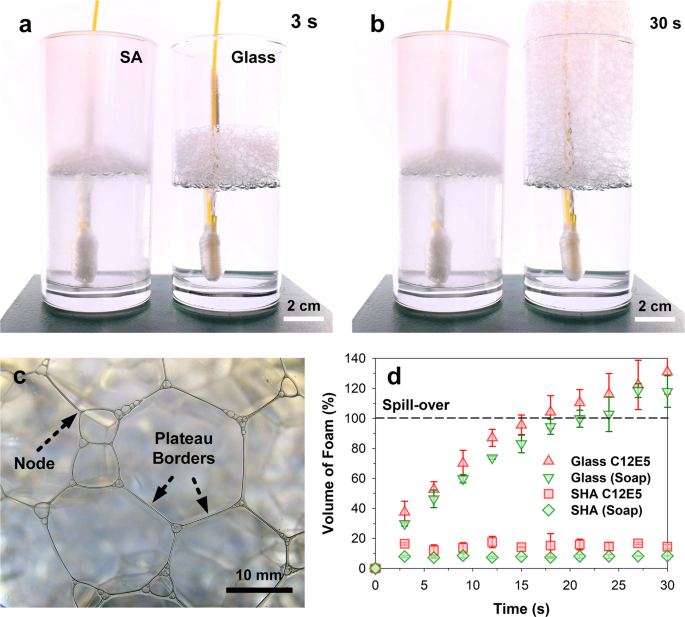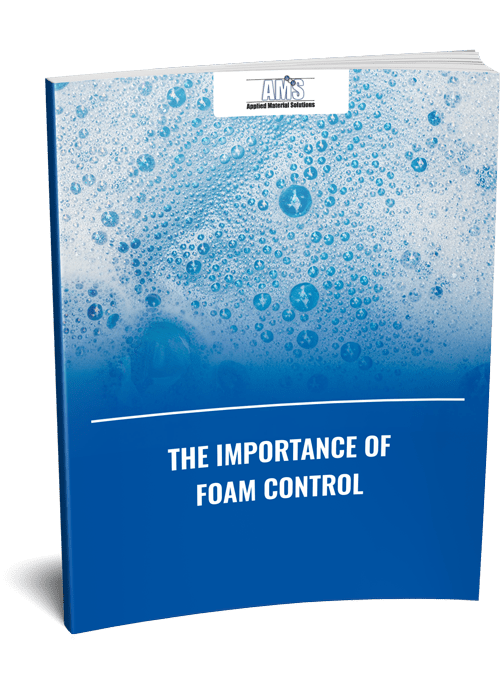Anti-Foam Control Solutions-- Maximize Production with Specialist Foam Control
Anti-Foam Control Solutions-- Maximize Production with Specialist Foam Control
Blog Article
Exactly How Anti-Foam Control Solutions Enhance Product Quality and Performance
The duty of anti-foam control remedies in commercial processes can not be overemphasized, as they are essential in enhancing both product quality and operational performance. By effectively mitigating foam development, these options not only make certain constant product appearance throughout various industries however also minimize the risk of contamination, which is essential for preserving high purity standards.
Recognizing Foam Formation
Foam development is a typical phenomenon experienced in various commercial procedures, usually arising from the communication of fluids with solids or gases. This sensation takes place because of the stabilization of gas bubbles within a liquid matrix, bring about the development of a frothy layer externally. The existence of surfactants, which reduce the surface stress of liquids, can intensify foam development by assisting in bubble formation and stablizing.
Numerous aspects influence foam growth, consisting of the nature of the liquid, the existence of impurities, temperature, and frustration degrees. High shear pressures during mixing can present more air right into the liquid, advertising bubble formation. In addition, hydrophobic and hydrophilic compounds can engage with liquid surface areas, influencing bubble security.
Recognizing the mechanisms of foam formation is vital for markets such as food processing, pharmaceuticals, and petrochemicals, where foam can hinder production efficiency and alter product top quality. Identifying the specific problems that cause foam generation enables much better design and control of procedures, eventually resulting in boosted functional end results. Recognizing these basic aspects of foam development sets the phase for exploring efficient services to alleviate its adverse results in industrial applications.

Importance of Anti-Foam Solutions
While foam development can enhance specific procedures, its unintentional presence typically causes considerable operational challenges throughout different markets. The build-up of foam can block equipment, minimize efficiency, and make complex production processes. In production, for example, too much foam can prevent the precise measurement of liquids, leading to incongruities in product formulation. In wastewater therapy, foam can hinder oygenation procedures, adversely impacting the treatment efficiency.

The importance of anti-foam services expands beyond operational effectiveness; they also play an essential function in keeping safety and security standards. In industries such as food and beverage processing, where hygiene is critical, controlling foam can stop contamination dangers associated with overflow and splilling.
Benefits to Product Top Quality
Reliable anti-foam services significantly improve product high quality across various industries by making sure constant solution and stopping the introduction of pollutants. The visibility of foam during manufacturing procedures can lead to variability in item features, which eventually impacts the end individual's experience. By minimizing foam development, these services facilitate consistent mixing and dispersion of components, leading to a product that meets rigid top quality requirements.
Moreover, anti-foam agents aid maintain optimum viscosity and appearance, which are essential for products such as coverings, food, and pharmaceuticals. Anti-Foam Control Solutions. A steady solution is not just cosmetically attractive yet additionally functionally remarkable, making sure that products execute as planned. In addition, the decrease of foam decreases the threat of contamination, as caught air can present undesirable bacteria or foreign fragments that jeopardize item honesty
In applications like fermentation or chemical responses, efficient anti-foam remedies support ideal yield and product uniformity, which are vital for preserving brand name online reputation and consumer Related Site complete satisfaction. By prioritizing item high quality, producers can cultivate trust and loyalty amongst customers, inevitably adding to long-lasting success in the marketplace.
Enhancing Functional Performance
A considerable decrease in foam can bring about enhanced functional efficiency in manufacturing processes across numerous markets. When foam is decreased, it enables smoother operations, therefore reducing downtime connected with foam-related problems. Excessive foam can cause overflow, disrupt equipment functionality, and require constant maintenance treatments, all of which add to ineffectiveness and boosted functional expenses.
By applying effective anti-foam control remedies, suppliers can streamline their procedures, causing improved throughput and productivity. The reduction of foam helps with better mixing and response times in chemical processes, which is critical in markets such as food manufacturing, pharmaceuticals, and wastewater treatment. In addition, with an extra secure process atmosphere, makers can achieve extra consistent item result, therefore improving total functional dependability.
In addition, improved operational performance can cause financial savings in basic materials and power usage. When foam is regulated efficiently, resources are utilized more successfully, bring about a this contact form decrease in waste and functional costs. Companies are much better positioned to meet manufacturing targets and react to market demands quickly, inevitably contributing to a stronger affordable advantage in the marketplace.
Choosing the Right Anti-Foam Agent
Selecting the ideal anti-foam representative is vital for sustaining the operational effectiveness gotten through efficient foam control. The selection of agent can considerably affect both the performance of the procedure and the quality of the last product. Variables such as the nature of the foam, the processing atmosphere, and the certain application should be thought about to make sure optimal outcomes.
Anti-foam agents can be classified right into two primary types: non-silicone-based and silicone-based. Silicone representatives are understood for their remarkable efficiency in high-temperature and high-shear applications, while non-silicone agents might be chosen in markets such as food and beverage because of regulative considerations. It is vital to evaluate the compatibility of the anti-foam representative with the processes and materials involved.
Furthermore, the focus of the anti-foam agent plays an essential function; too much usage can result in adverse effect on item top quality, while not enough quantities may fall short to regulate foam properly. Conducting comprehensive testing and pilot tests can assist determine the most appropriate anti-foam agent for a certain application, eventually boosting both item high quality and operational performance.
Final Thought
In final thought, anti-foam control remedies play a vital role in boosting item top quality and operational effectiveness across numerous sectors. By decreasing foam formation, these solutions make certain regular mixing and item appearance while minimizing contamination risks.
By effectively mitigating foam formation, these remedies not only make sure constant item texture across numerous sectors however also decrease the Full Report danger of contamination, which is essential for preserving high purity criteria.Understanding the systems of foam formation is crucial for sectors such as food processing, drugs, and petrochemicals, where foam can prevent production efficiency and change item high quality. The visibility of foam throughout production procedures can lead to variability in item qualities, which eventually influences the end individual's experience. By mitigating foam formation, these options assist in uniform mixing and diffusion of active ingredients, resulting in an item that fulfills rigid high quality criteria.
Picking the suitable anti-foam representative is vital for maintaining the operational efficiency obtained with efficient foam control.
Report this page